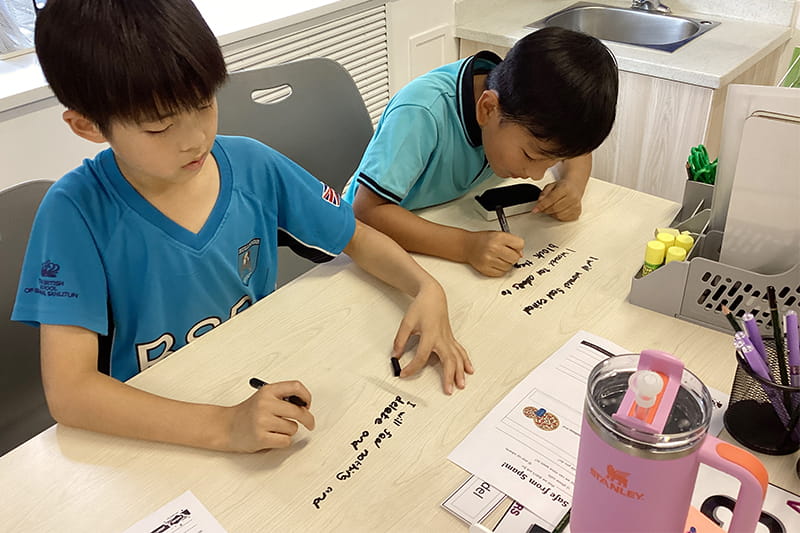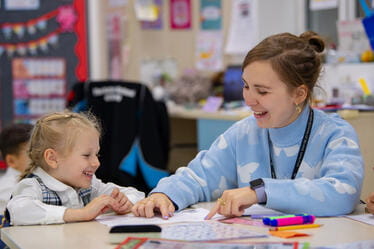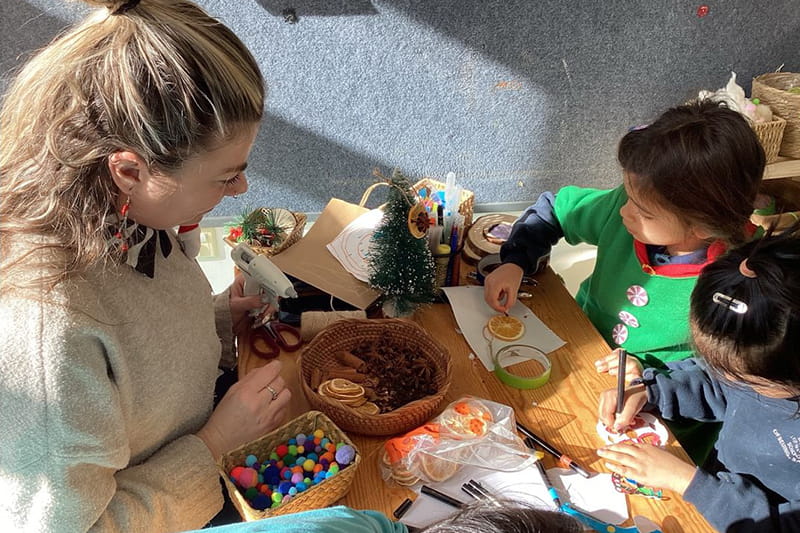When we think of writing in primary school, most of us picture neat lines of work in an exercise book. While this has its place, research shows that children also benefit greatly from writing in different spaces—on tables, windows, whiteboards, or even the ground outside. These opportunities are not about avoiding books, but about broadening the ways children can engage with writing and learning.

Educational research highlights that writing is not just a cognitive task but also a physical and creative one. Theories of “embodied learning” suggest that children understand and remember ideas more deeply when their bodies are actively involved in the process. For example, writing on large surfaces like tables or the playground floor allows children to use sweeping arm movements, strengthening the muscles needed for fine motor control and handwriting (Cameron, 2001).
Writing in unconventional spaces also encourages risk-taking. A blank page in a book can feel intimidating, but a whiteboard or window feels temporary and forgiving. This sense of freedom helps children to experiment with spelling, vocabulary, and sentence structures without the fear of “getting it wrong.” Carol Dweck’s research on growth mindset shows that when children feel safe to make mistakes, they are more likely to persevere and develop resilience as learners.

Collaboration is another key benefit. When children share a table or work on a group whiteboard, they naturally talk through their thinking, compare ideas, and build on one another’s contributions. Vygotsky’s social learning theory emphasises that these interactions are crucial for developing higher-level thinking and language skills. Writing in shared spaces turns literacy into a social, engaging process rather than a solitary task.
Outdoor writing—whether chalking letters on the playground or creating story trails on the pavement—adds yet another dimension. Being outside not only makes learning memorable, but it also links writing with the wider world, sparking imagination and encouraging children to see literacy as something dynamic and exciting, not just confined to a desk.

By offering a range of writing opportunities beyond the traditional book, we support children in developing creativity, confidence, and a love of learning. Books remain vital, but windows, tables, floors, and whiteboards remind children that writing is not just about presentation—it is about thinking, exploring, and communicating in ways that feel joyful and meaningful.
By Emily Kingett
Year 5 Walruses Teacher, Upper Primary Leader









